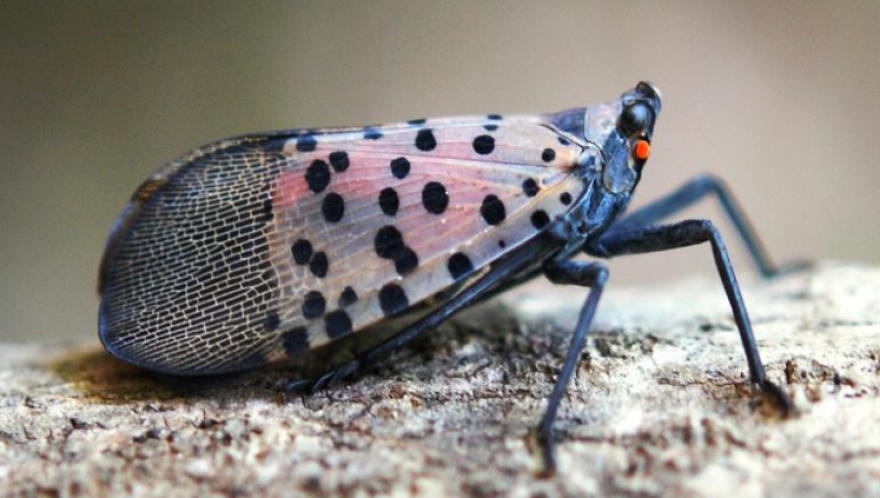"See it. Squish it. Report it." That's the advice from the Michigan Invasive Species Program regarding the invasive spotted lanternfly, which has been detected in Oakland county. The colorful insect — indigenous to China and Vietnam — poses a major threat to Michigan crops, ornamental plants, and peoples' property. The insect feeds on a variety of fruit trees and especially enjoys grape plants.
Michael Philip is the director of the Pesticide and Plant Pest Management Division in the Michigan Department of Agriculture and Rural Development. He calls the lanternfly a "multi-faceted pest" because it can damage property in addition to crops and garden plants.
"It's a nuisance pest to property owners. When this insect feeds, it produces what is called honeydew. Whatever the spotted lanternflies are in the vicinity of, they get the honeydew on it. The honeydew is very attractive to stinging insects. Wasps love to come to the honeydew. That's bad enough, but maybe more significantly is that the honeydew, when it's all over your house or your car or your ornamental landscaping, it can be colonized by sooty mold."
In severe cases of infestation in the Northeastern U.S., spotted lanternfly honeydew has caused so much sooty mold growth on shrubs that the plants are unable to photosynthesize and ultimately die.

The DNR hopes to contain the population in Oakland County, but urges Michiganders to be on the lookout for any spreading lanternflies. If you do come across one of the insects, the DNR advises that the insect should be photographed, squished, and reported using its Eyes in the Field reporting form.
Philip says the lanternflies are fairly easy for anybody to spot.
"If you look at a picture of a Spotted lanternfly and really pay attention to it, there is nothing else in Michigan that looks like it. It is a very, very unique insect."
Adults are most visible from August through October, and are about an inch long. They have gray to brown folded wings with black spots; the hind wings are red with black spots. Their egg masses, deposited on outdoor structures, cars, trailers, and even firewood, resemble putty or a wad of chewing gum.
Clarification: This story has been updated to reflect that the "See it. Squish it. Report it." campaign by the Michigan Invasive Species Program is a joint effort between the state Department of Agriculture and Rural Development, Department of Natural Resources, and Department of Environment, Great Lakes, and Energy; and that "the Northeast" refers to the Northeastern United States, not Northeastern Michigan.






